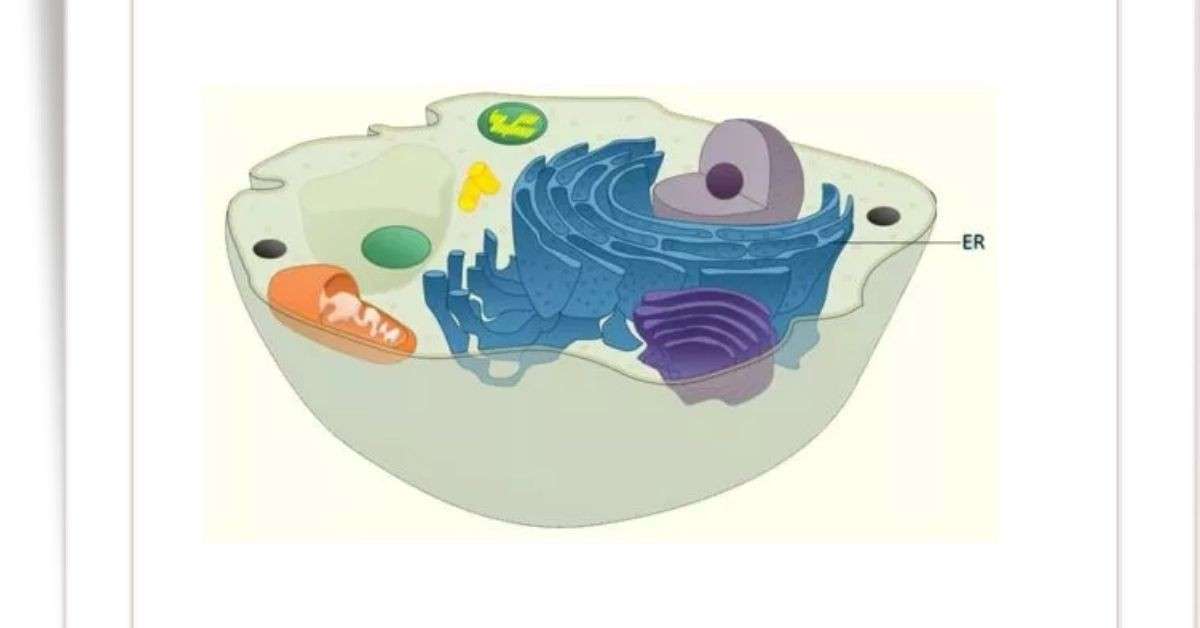All living organisms are composed of cells and cell products. Each eukaryotic cell contains several cytoplasmic organelles. Among the organelles, endoplasmic reticulum performs as intracellular transport system for various substances and also helps to exchange the materials between nucleus and cytoplasm. Prokaryotic cells and RBC (red blood cell) do not have any endoplasmic reticulum. Endoplasmic reticulum is the interconnected system of membrane-bounded tubules and vesicles which form irregular reticulum or network in the cytoplasmic matrix.
All nucleated animal and plant cells contain ER. This membranous system extends throughout the cytoplasm from nuclear membrane to plasma membrane. According to some scientists, endoplasmic reticulum is originated by the invagination of nuclear membrane but some suggested that they grow through the expansion of the pre-existing membrane.
Porter, Claude and Fulum first used the name endoplasmic reticulum in 1945 after observing it under electron microscope of liver cells.
Physical Structure of Endoplasmic Reticulum
Morphologically, endoplasmic reticulum may happen in the three structures:
- Lamellar structure or cisternae
- Vesicular structures or vesicles and
- Tubular structures or tubules.
Cisternae: They are long, flattened, unbranched membrane-bound tubule with a diameter of 40-50 µm. They arranged parallel to each other to form lamellae. They are coated with ribosome.
Vesicles: They are oval or rounded membrane-bound isolated vacuolar structure with a diameter of 25-500 µm.
Tubules: They are long and branched structures with a diameter of 40-90 µm which form the reticular system in the cytoplasm along with cisternae and vesicles. Like the unit membrane, it is made up of lipo-protein.
Types of Endoplasmic Reticulum
There are two types of ER such as Rough Endoplasmic Reticulum (RER) and Smooth Endoplasmic Reticulum (SER). Rough endoplasmic reticulum is also known as granular endoplasmic reticulum because it is attached with ribosomes while smooth endoplasmic reticulum is also known as agranular endoplasmic reticulum because they do not have attached ribosome with them.

Chemical Composition of Endoplasmic Reticulum
Chemically, it is made up of the following components:
- Protein (60-70%)
- Lipid(30-40%) and
- Enzymes (more than 15%)
Functions of Endoplasmic Reticulum
Endoplasmic Reticulum (ER) performs the following functions:
- It forms the skeletal frame work of the cell.
- It gives support to the cytoplasmic matrix.
- In the cells, lipid, cholesterol and glycogen are synthesized by the smooth ER while protein is occurred by the rough ER. Smoot ER also protects the cell from the effects of various substances by its detoxification properties.
- Membrane of endoplasmic reticulum takes part to conduct intracellular impulse as seen in the muscles.
- The endoplasmic reticulum of certain cell such as testis or corpus luteum are concerned with the synthesis of respective steroid hormones.
- ER of parietal cells of stomach helps to secrete hydrochloride acid.
- It acts as a circulatory system of the cell for transporting materials very quickly.
- It helps to form various vacuoles.
- It provides larger surface area which is useful for rapid synthesis of biochemicals.
- ER of one cell makes communicate wit endoplasmic reticulum of adjacent cells. It provides the mechanical support to the cells.
- It provides sites to cytochromes to carry out the specific reactions.
- It transmits information from outside to inside of the cells.
- It also transmits information between different organelles of the same cells.
- They help to form the new nuclear membrane after each nuclear division.
- They produce some hormones such as progesterone, testosterone, etc
- They help to transport of carbohydrates and proteins to another cell organelles such as plasma membrane, lysosomes, Golgi apparatus, etc.

